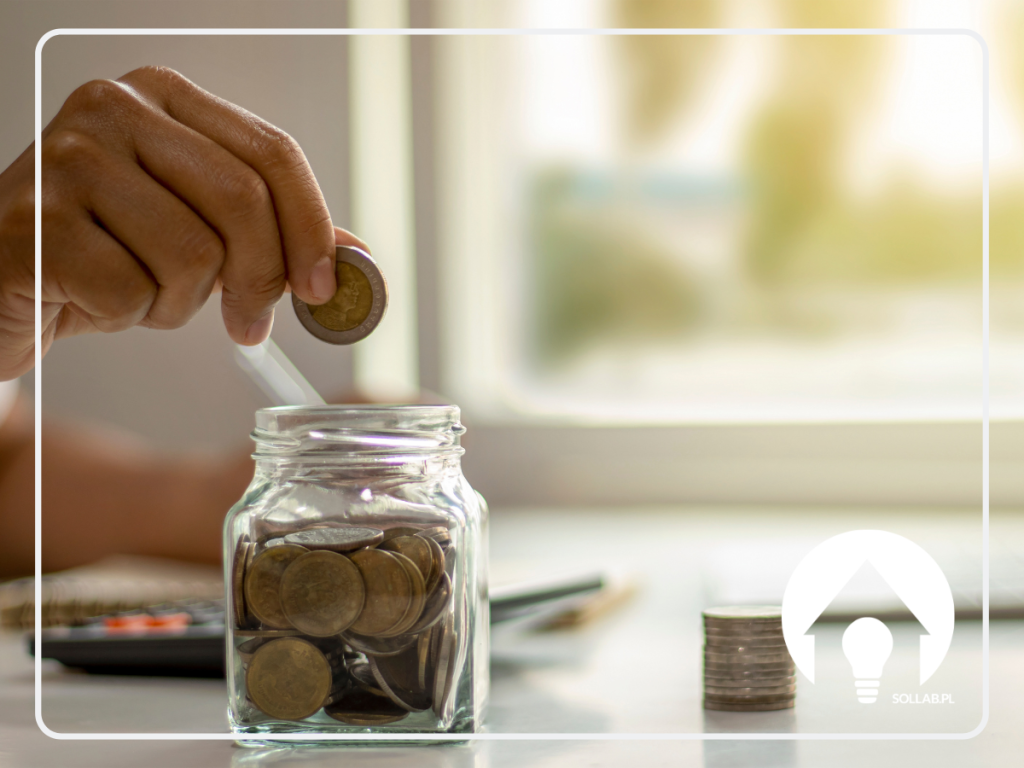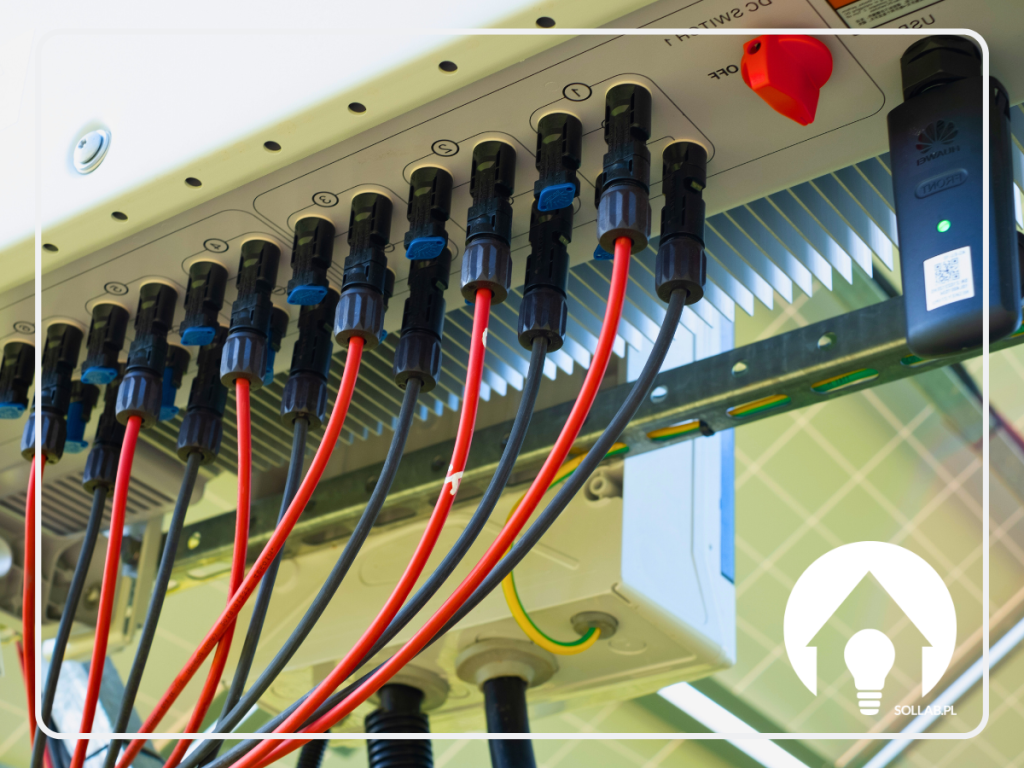How do double-sided photovoltaic panels - Bifacial - work?
Renewable energy is becoming one of the most popular sources of green energy, which makes innovation in this field almost imperative. Photovoltaic panel manufacturers are outdoing themselves with innovative solutions. In this context, bifacial panels, although still relatively young on the market, are gaining in popularity and are becoming an attractive alternative to traditional modules. What are the characteristics of bifacial panels? We take a detailed look at this groundbreaking technology, which has the potential to radically change the way we use solar energy.
What are double-sided photovoltaic panels?
Double-sided photovoltaic panels, also known as bifacial panels, are a modern solar innovation that allows more efficient use of sunlight to generate electricity. Their uniqueness lies in their ability to produce electricity from two sides of the panel, meaning that they can absorb direct sunlight from above as well as reflected light from the environment.
Traditional photovoltaic panels have only one active photovoltaic side. With bifacial panels, both sides of the panel are equipped with photovoltaic cells. This allows light to be absorbed not only from the top, but also from the bottom of the panel, which is made possible by reflections from the surface on which they are mounted, such as a light-coloured roof, concrete or even snow. This allows bifacial panels to generate more energy compared to traditional panels.
For bifacial panels to fulfil their role, they must be installed on a reflective surface. Installation and orientation are extremely important here. The panels must have access to the sun's rays from two sides. This positioning is easiest to achieve with a structure set on the ground.
Construction of Bifacial panels
The construction of bifacial panels, or double-sided photovoltaic panels, has several key elements that distinguish them from traditional photovoltaic panels:
- Photovoltaic cells on both sides: The main feature of bifacial panels that distinguishes them from classic pv modules is the presence of photovoltaic cells on both sides. These cells can capture sunlight from both sides, which increases their energy efficiency.
- Transparent Coatings and Materials: Unlike conventional panels, which have a protective coating on one side, bifacial panels often use transparent materials (such as special glass) on both sides. This allows light to penetrate through the back of the panel, allowing additional sunlight collection.
- Frame and supporting structure: Bifacial panel frames are designed to allow maximum light capture from both sides. In some cases, the frames are minimised or eliminated altogether to increase light exposure from the back of the panel.
- Optimisation for Light Reflection: Bifacial panels are installed in such a way as to maximise the reflection of sunlight from the surface beneath the panels.
- Assembly systems: Because of the need to expose both sides of the panel to light, mounting systems for bifacial panels differ from those used in traditional installations. They must provide sufficient space between the panel and the mounting surface to allow light to be captured from underneath.
Double-sided panels can be more efficient in low-light conditions, such as on cloudy days, as they are able to make better use of diffused sunlight. Their construction tends to be more robust and resistant to various weather conditions.
Double-sided panels and their performance
According to studies conducted so far, bifacial panels are considered more efficient compared to their traditional counterparts. By using technology that allows bifacial absorption, up to 20-25% more energy can be obtained. The main factor that determines energy production is how much sunlight is actually reflected from the special surface. Any shading elements also have a large impact on the output. Therefore, when deciding to install double-sided panels, the colour of the substrate is important. Lighter areas reflect sunlight much better.
The final performance of the panels will depend on a number of factors - the presence of shading, the angle of inclination of the panels, the type of roof, the existence of specific weather conditions or the orientation of the installation - preferably south-facing, although east- or west-facing panels also work well - must also be taken into account at the design stage.
Mounting systems for bifacial panels
Double-sided panels can be installed on the ground as well as on the roofs of buildings. Their mounting systems differ from those used in traditional photovoltaic installations. The main aim is to maximise the exposure of both sides of the panel to sunlight, which is key to the efficiency of these panels. Compared to single-sided panels, the main difference comes down to minimising the shading effect on the back of the modules, and thus using slightly different mounting systems. The support structure for bifacial panels must take into account the fact that they cannot be shaded from below. The second important aspect of mounting is the mounting height of the panels, specifically their distance from the reflective surface of the incident light. Better energy yield is provided by mounting on a high frame.
Advantages and disadvantages
Offering an innovative approach to photovoltaic technology, bifacial panels bring a number of advantages, but also some disadvantages. Here is a summary of the key advantages and disadvantages of these panels:
Advantages
- Increased productivity - Thanks to their ability to collect light from both sides, bifacial panels can generate more energy than traditional single-sided panels, especially in conditions where there are significant light reflections.
- Better use of diffused light - They are more effective in low-light conditions, such as on cloudy days, as they can use reflected and diffused light from different directions.
- Smaller installation footprint - An installation with bifacial modules does not require a large amount of space and materials for construction, as its design can produce significantly more electricity per 1m of2.
- Longer service life - Bifacial panels are often made of more durable materials, which can contribute to their longer life, making them less expensive to use over the years.
Disadvantages
- The higher cost of pinitial - Bifacial panels can be more expensive to purchase than traditional monofacial panels.
- The complexity andnstallations - They require special mounting systems and careful planning to maximise light exposure on both sides.
- Dependence on environmental conditions: The performance of bifacial panels depends significantly on the reflection of light from the surface beneath them, meaning that in some locations they may not work as effectively.
- Design constraints: Their two-sided nature may impose some design constraints, for example on the location and direction of installation.
In summary, bifacial panels offer significant advantages in terms of performance and versatility, but their efficiency and cost-effectiveness may depend on specific installation and environmental conditions. The choice between bifacial and traditional panels should be made after careful analysis.
Why should you consider buying bifacial panels?
Bifacial panels are seen as one of the future growth paths in the photovoltaic industry because of the range of advantages they offer. Their potential to increase efficiency and flexibility in generating solar power makes them an attractive option for both new installations and for upgrading existing systems. Ongoing research in the field of photovoltaics is focused on increasing the efficiency of the screens, as well as maximising the use of the sun's rays. As a result, experts consider bifacial modules to be the future of photovoltaics. Given the improved performance at a small price difference, it is already worthwhile to take advantage of this technology when building home grids.
Thanks to the two sunlight-absorbing surfaces, bifacial panels allow the production of more electricity than traditional solar panels. Producing your own green energy is a good way to protect the environment and reduce harmful emissions into the atmosphere. It is worth bearing in mind that the installation of bifacial panels may require a higher investment than traditional solar panels, but with their higher energy efficiency and savings in the long run, it can be a good investment.
CATALOGUE KATA jinko bifacial
















